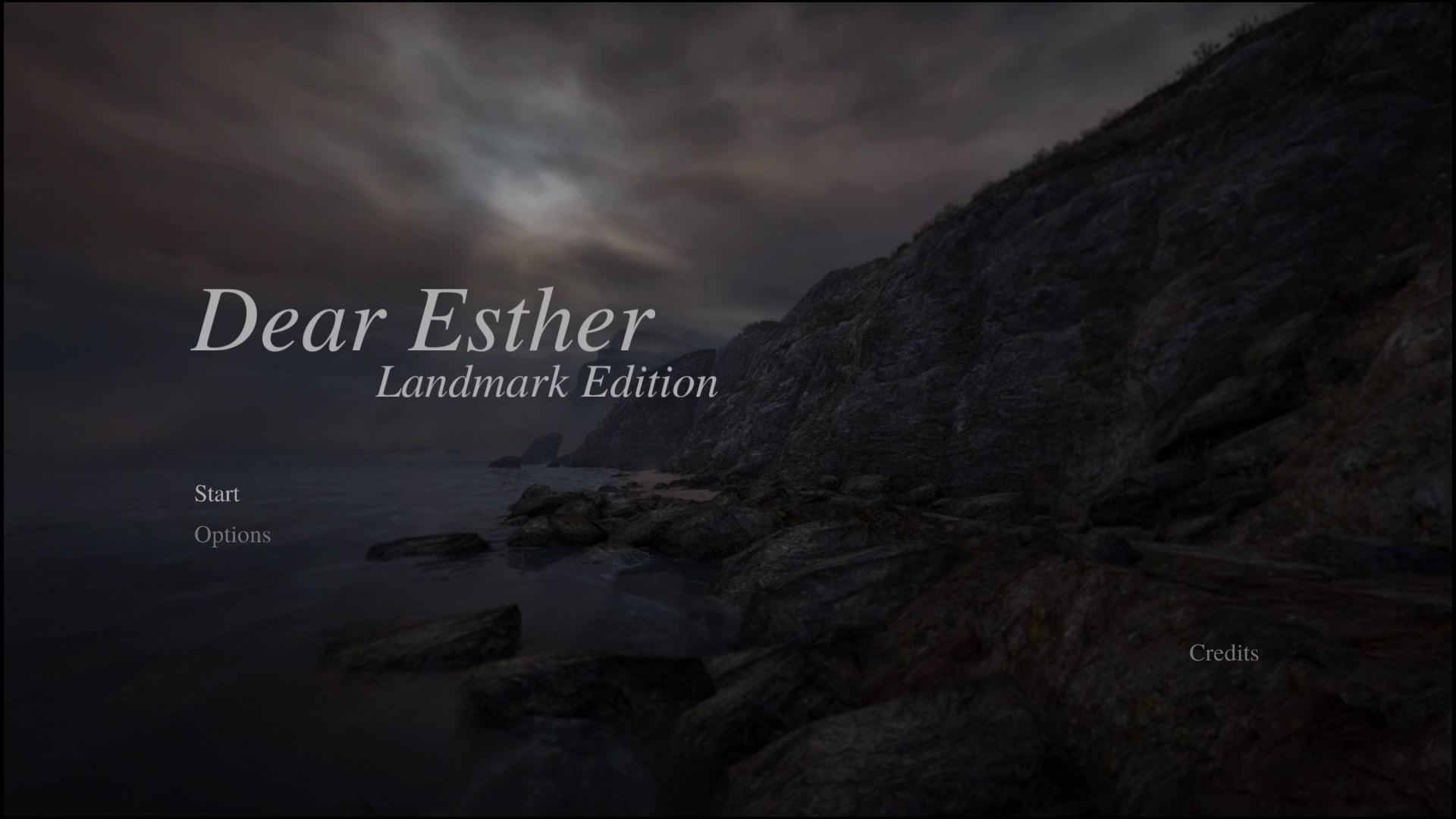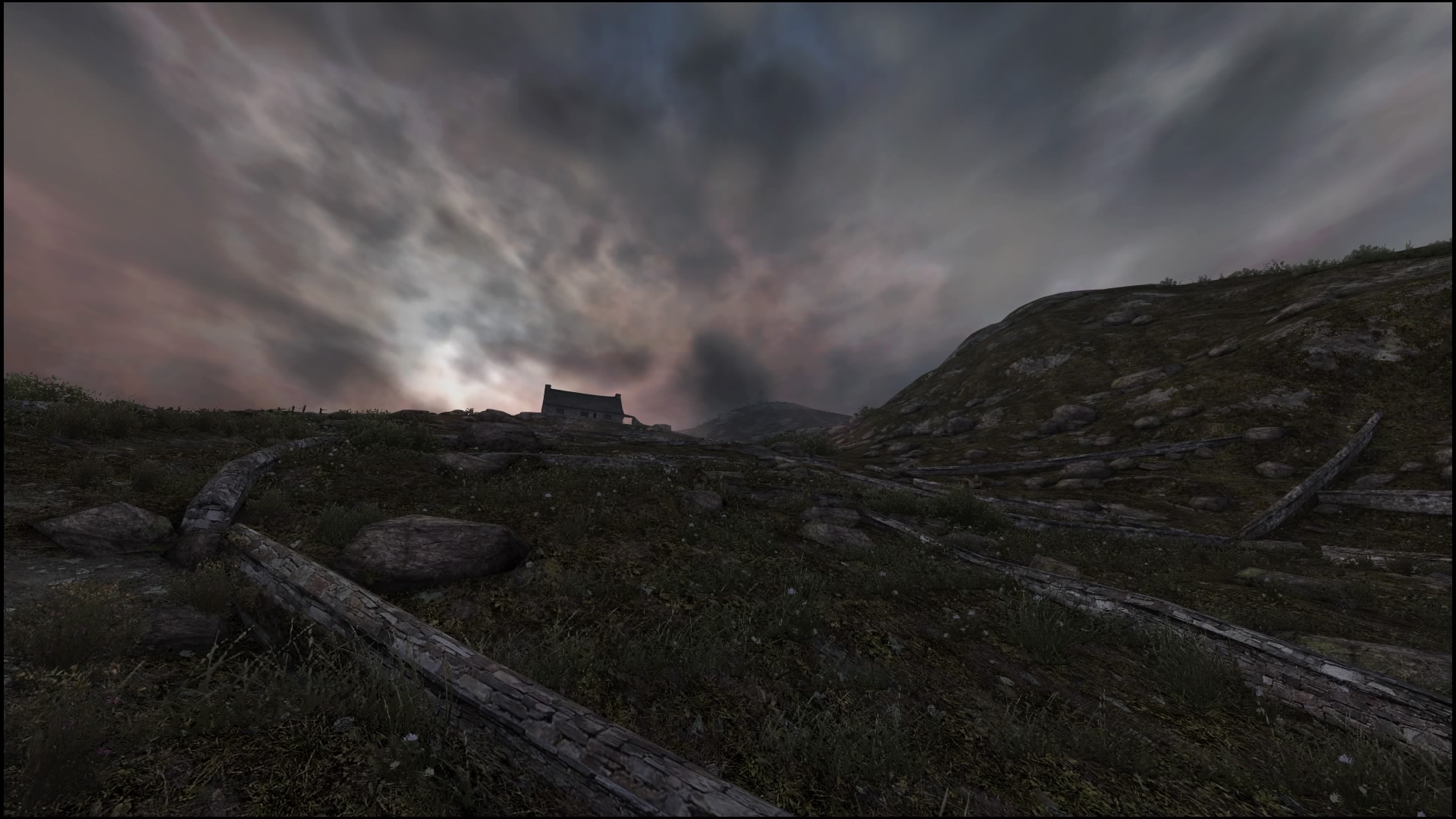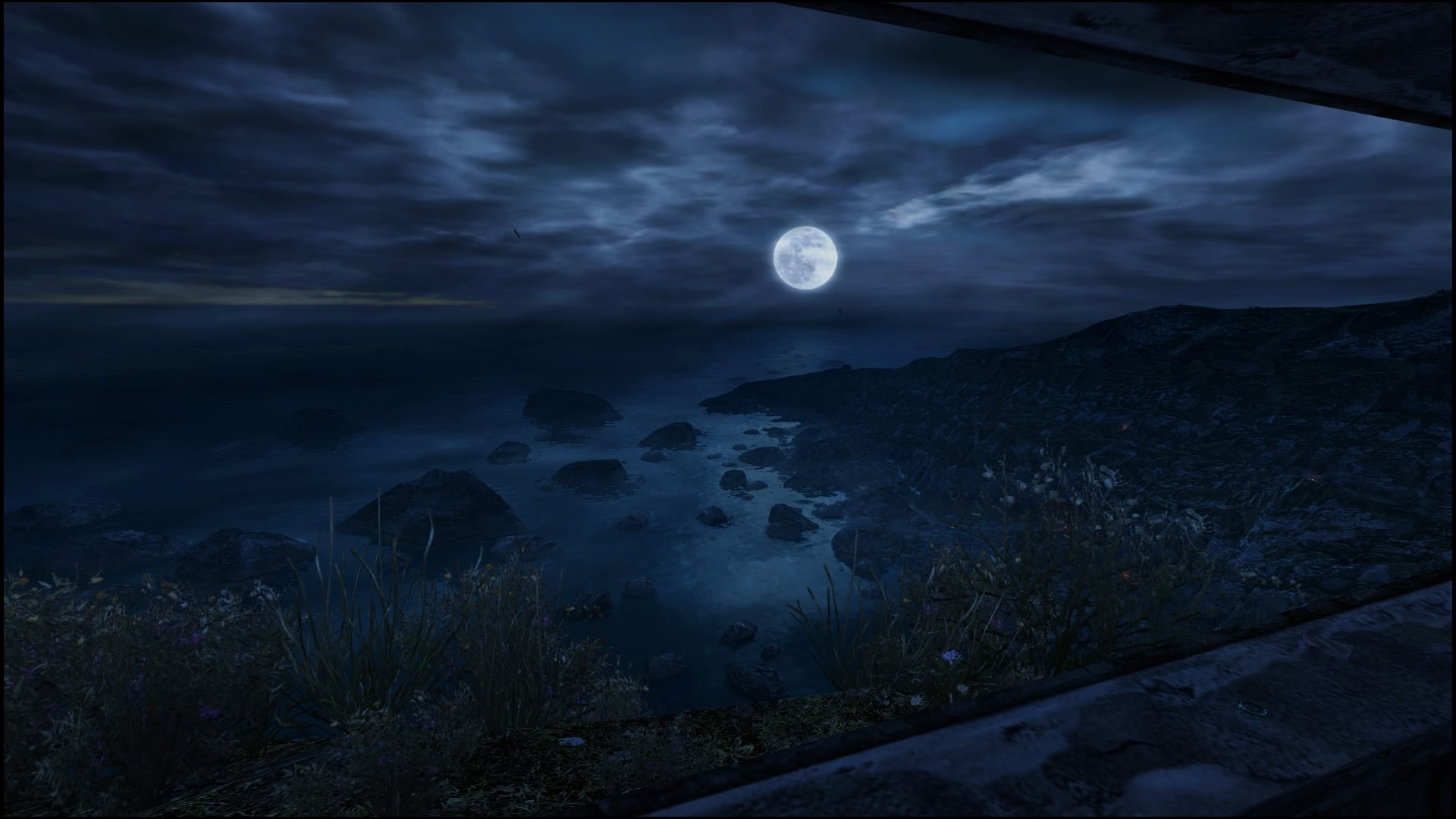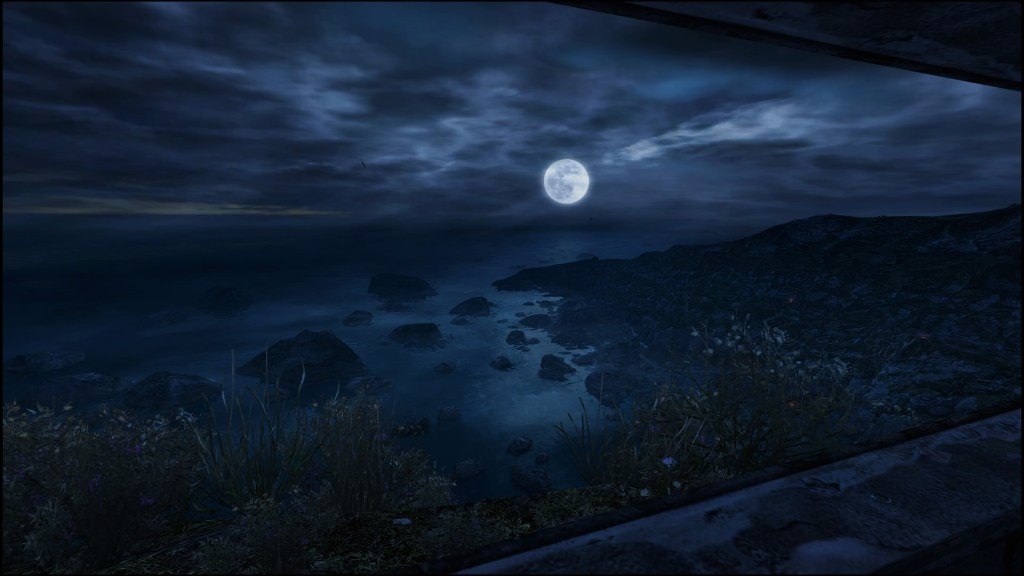
When it comes to convoluted development cycles, few can match the quest that has finally brought Dear Esther to the PlayStation 4. The game itself is a remaster of a remake of a Half Life 2 mod. I’ll let that statement sink in for a second. Ironically, depending upon who you ask, some people wouldn’t even consider it a game. Yet here we are, eight years after the original mod’s release, enjoying its unique variety of interactive entertainment on a home console. Now if only the content within the game itself had aged anywhere near as elegantly as its enhanced presentation.
A Brave First Step
Dear Esther’s initial release heralded the creation of what many have come to call the “walking simulator.” Don’t worry. Walking Simulators are rarely as boring as the name would imply. Upon my first playthrough of Esther back in 2008, my view on games as a narrative medium were dramatically impacted. The disjointed storytelling and exploration mechanics provided an interesting new way to immerse yourself in a storyline, while still maintaining some game-like elements.
It is amazing to consider that a title can sustain itself using sauntering as its only true gameplay component. Yet despite the lack of interactivity, Dear Esther does a fantastic job of fleshing out the unknown, albeit vacant, world in which the player inhabits. The story itself plays out via a narrated voiceover, which is activated while traversing the island on which the player is marooned. The narrative starts out rather random and disconnected from the core plot. It acts more as a way to set the scene and provide context to the weird formations that are scattered about the environment. However, as the actual plotline begins to come into focus, the true meat of the game finally presents itself.

I realize that this is an extremely old game. However, I am still going to steer clear of discussing the actual plot points. This is one of those things that you need to experience for yourself in order to truly appreciate what the developers have accomplished. Plus, to be quite frank, the story is Esther’s key reward. It wouldn’t do the game any justice to just spill it onto the page. Amusingly enough, I would argue that this sort of textual diarrhea is actually how the story is portrayed to the player.
It’s All in Your Head…
Every piece of narration is presented in a surprisingly open manner, through the use of both random and scripted events. Scripted events take the form of descriptions of the island and its geographic formations. It is also used in several scenarios to explain what the bloody hell is happening with the odd wall etchings that are scattered all over the island. These pre-defined set pieces are punctuated by the actual story, each part of which has a position that is generated at random. Ultimately, this results in a gameplay experience that is unique each and every time. Sure, the dialog itself is identical each session, but sometimes the order in which they are experienced can drastically impact your perception of the events. For this reason, it is especially fun to sit though someone else’s playthrough and discuss their theories of what is going on as the action unfolds.
[imagebrowser id=3917]
The island of Esther is the perfect location to set a walking simulator. Everything from picturesque cliffside vistas to glistening underground caves can be found around the isle. Oddly enough, the vast majority of this meagerly populated world has very little to do with the actual storyline. Essentially it acts as a stunning backdrop that helps drive the exploration forward. Fortunately, the hunt for the island’s inner beauty is damn near as compelling as the voice in the player’s head. The PS4’s remade visuals improve on previous iterations rather dramatically, while also not being so overwhelming that it distracts from the narrative. A perfect example of this would be the night time walk along the beach, which has an exquisite skybox displaying the low-hanging moon glistening off the water. While providing an arresting visual element, it also adds a haunting resonance to the story, from that point forward.
Speaking of haunting, the soundtrack to Esther is downright fantastic. Admittedly, it was sparse throughout, but when they chose to use music, it was pivotal in the narrative. You don’t have to delve too far into the internet to realize that the game is hardly a bastion of happiness, which is reflected in every depressing beat of the score. Call me crazy, but I feel that the only thing wrong with the music was that there needed to be more of it!

Slowing to a Crawl
As far as walking simulators go, the genre has come a long way since this title’s original release. Heck, The Chinese Room released Esther’s spiritual successor last year in the form of the stellar Everybody’s Gone to the Rapture. While Rapture felt about as teaming with life as an empty town could, Esther feels like it takes place in an empty locale that has been abandoned for far too long. I understand that they are essentially trying to establish the island itself as a pivotal character. Unfortunately, a fresh coat of paint cannot cover up the lack of life present in virtually every aspect of the game. As one of those folks that fell in love with the original mod, it pains me to come to the realization that everything feels so damn boring.
Every game developer has to start somewhere. Dear Esther was a valiant first step into a much bigger world. It may have been something special back in 2008, but it is definitely showing its age — especially when compared to The Chinese Room’s later releases, Esther falls dramatically short of modern expectations. If you are looking to relive the first salvo in the walking simulator renaissance, then feel free to give this a try. However, if money is truly burning a hole in your pocket, you should probably just check out Everybody’s Gone to the Rapture instead.
Review code for Dear Esther: Landmark Edition provided by publisher. For more information on scoring, please read our Review Policy here.
-
The new remade visuals are dramatically improved
-
Every track in the score is amazing
-
The dynamic story structure keeps the game interesting
-
The island feels devoid of any life
-
The color palette is made up of way too many grays and browns
-
Story isn't compelling enough, when compared to its peers




